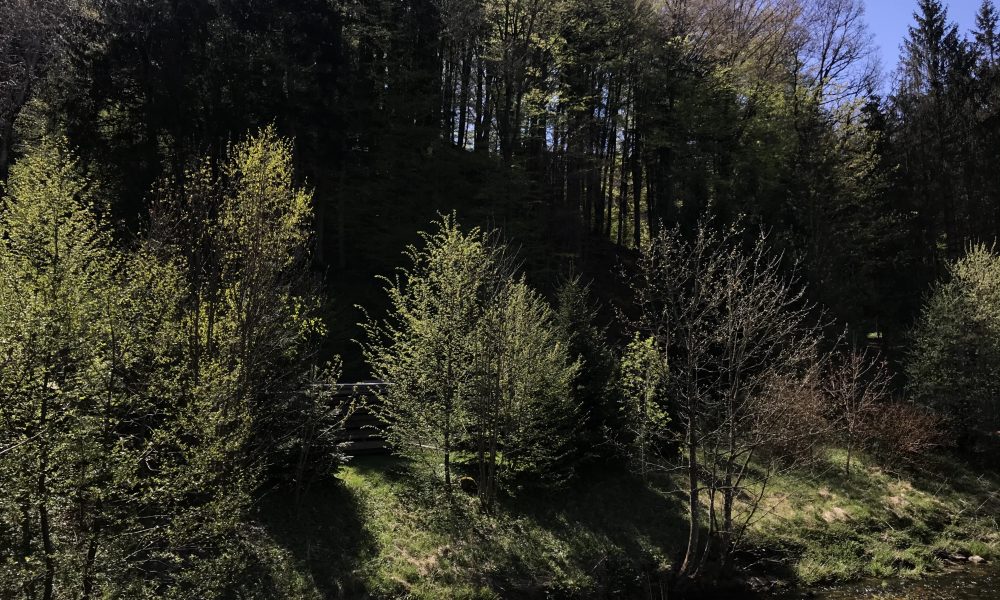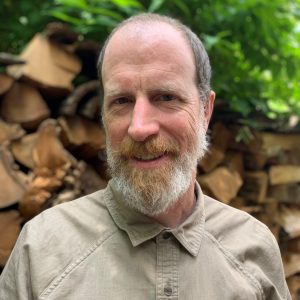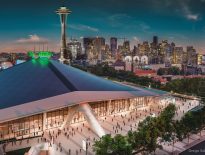- WHO WE ARE: Original, sustainable, healthy
Looking on a map of Upper Austria in central Europe, you will find a vibrant and healthy river no bigger than most fly-fishing streams that I frequent in my home state of Maryland. The banks are gently sloping, carefully cradled by nature’s design where a buffer of perennial vegetation protects them from undue erosion while providing habitat for birds, mammals, insects, and reptiles alike. Its headwaters originate from one of the largest forests in middle Europe known as the Kobernausser. This river, called the Schwemmbach, courses through the idyllic verdant valley, flowing through Schneegattern and several other small villages on its way down to the Inn River, (which forms the geographical border between Austria and Germany), eventually running into the famous Danube.
The Schwemmbach River flows by Schneegattern and other small villages in Upper Austria. These centuries-old villages have been the sites of numerous homesteads. One particular homestead in Schneegattern belonged to the Fillafer family. In the early 1900s the family started a sawmill in the village, which utilized the Kobernausser (Kobern) forest for its timber and the Schwemmbach River for its power. This is where mafi was born as a lumber-processing mill in 1919. The river flow generated enough power to saw logs brought down by local farmers and lumbermen via railroads, trucks, horse and cart, or by the river itself. At first, the original sawmill made the structural beams for homes, warehouses, and barns for the local communities. After surviving the Second World War unscathed, the Fillafer family expanded its mill operations to include crafting fine woodworking and detailing. In the 1980s a new generation of the Fillafer family constructed the award-winning, energy-efficient factory that today manufactures products that recently achieved Living Product Challenge certification from the International Living Future Institute. The mafi of 2020 is still located directly on the banks of the Schwemmbach and although we do not use the river for power today, we maintain the same relationships with local communities and receive a majority of our raw logs and timber from the same forests as did the original founder.
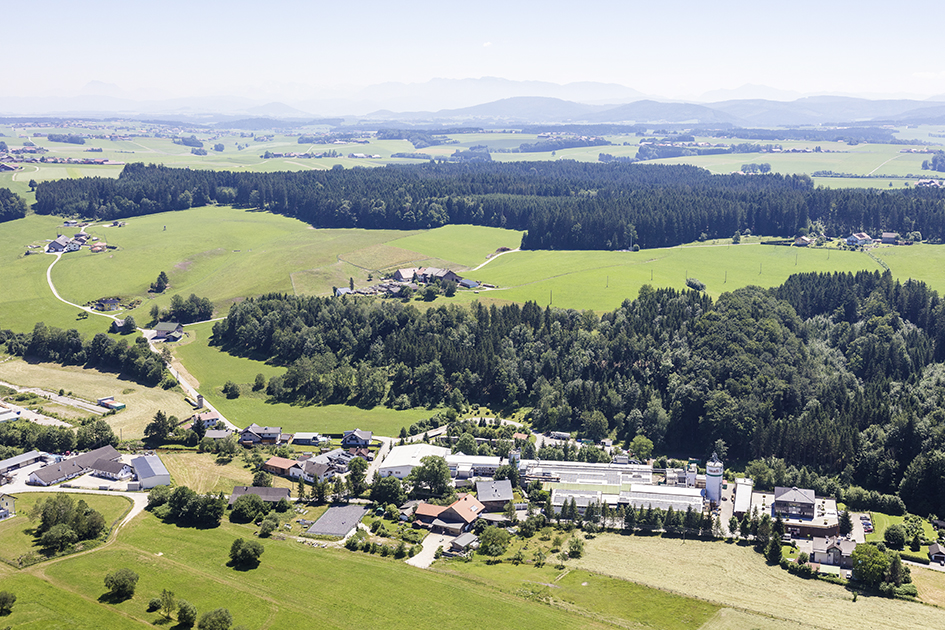
My 20-year career as a wood floor mechanic started by looking inside the wood surfaces industry for solutions to the common problems associated with the promotion, use, and application of hazardous chemical products for the protection of wood floors. This effort led me on a search for safer and healthier products to use for my own benefit and, more importantly, for my clients. After discovering through mafi that wood does not need coatings to be healthy, I was transformed into a proponent of the old school uses of wood as a living and present participant in our indoor environments. At that moment I decided to stop using the hazardous products of chemical companies. In 2012, I connected with the family of mafi and throughout the following years in my role as sustainability manager I was able to create the content for promoting and marketing healthier options for existing and future clients within the U.S. market.
In the Schneegattern valley, mafi’s two production facilities are companions to the flagship showroom in Salzburg. Worldwide, mafi has partners in 55 countries who are telling the story of stable, natural, and healthy surfaces in each of those cultures.
II. RETHINKING THE BUSINESS ECOSYSTEM: Still the one and only
The mafi brand has been exclusively and actively involved in producing natural wood products based upon old techniques embracing what is industry-known as the best type of manufacturing for resilience and longevity. This time-tested traditional method is known as symmetrical balanced construction. In this system, three lamellas of solid wood are glued together in perpendicular layers to create a stable, healthy, and natural surface. Alternately, construction may consist of one single solid layer of wood that has been dried and molded into a plank or, for an industry-typical style of engineered planks, a single thin lamella is glued to a backing of plywood. The mafi profile, in essence, is the original form of plywood without the phenol formaldehyde adhesives used in conventional plywood manufacturing. We strictly use this symmetrical balanced style of construction for all of our planks. This practice is a more expensive and laborious mode of production but industry experts agree that it results in the most stable and durable plank. Even though we use only a simple white glue to bond the three layers together, a mafi surface does very well in heavy commercial applications and even in wet areas such as bathrooms or kitchens. For the protection and an enhanced look of the plank, mafi applies a plant-based oil that is allowed to naturally penetrate into the pores of the wood without any accelerants or hardeners. The process I just described is not complicated or environmentally questionable; we only take nature’s resources and mold them into a stable platform, preserving that platform with natural oils.

Some people might ask why a third-generation family of wood craftsmen would want to go through the rigorous process of the Living Product Challenge. It may seem redundant to customers who already purchase from mafi and who understand the forward thinking plank structure, and appreciate mafi’s philosophy of building a healthy product while honoring the stewardship of nature. The true reason mafi chose to pursue this certification is that we all have an opportunity to learn at any stage of life. Through this LPC certification process, mafi can learn how to be better stewards of nature, how to make our products more efficiently, learn more about where all of our resources/supplies come from, and how carbon/greenhouse gas emissions can be reduced. While mafi is the only plank manufacturer that is natural in all of its processes, mafi still wants to enhance its understanding about how to create products that allow us as a manufacturer to give back more than we take from the environment. As a moment of clarification and experimentation, using the requirements of the LPC, we identified some shortcomings and inefficiencies that have led to new goals for future improvements. For example, the packaging materials we purchased for our final deliverable were adjusted from typical cardboard to an FSC cardboard supplier and the plastic wrap for each package will be switched into a biodegradable version when the right material is found. There were also a couple of our filler ingredients for a few products that were not 100 percent solvent-free and we got rid of these components. We are continually searching for more FSC lumber sources to complete the full product availability of our LPC certified materials. Eventually, every single plank will be part of the LPC program. Mafi has instituted a logistic option that includes the consolidation of orders for the United States and Canada into full containers to reduce the carbon costs of transportation.
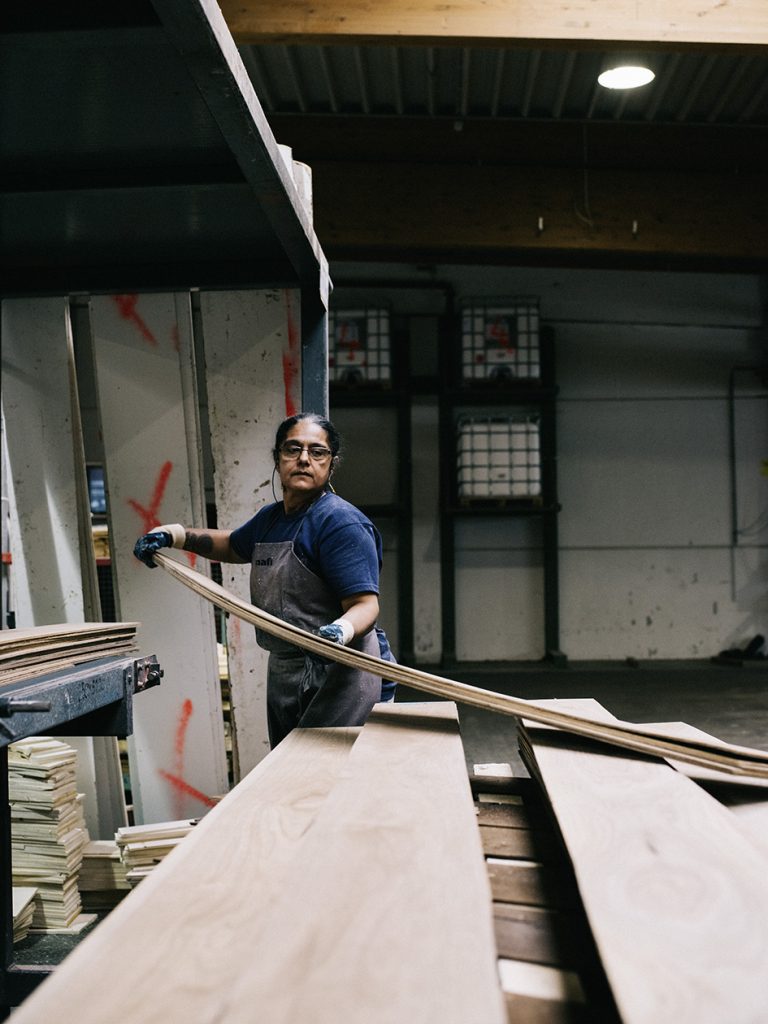
This certification journey is not solely to gain additional traction within this unique market; rather, it is a chance for a small family-owned producer to set an example for others and to teach how incredibly important our role is in our community, our country, and the world. The International Living Future Institute and the Living Product Challenge have given us this opportunity. Indeed, the Living Product Challenge and mafi share a lot in common but especially three important values that we model in our business: carbon sequestration; resource protection and environmental stewardship; and human health.
Carbon sequestration
By using its three-layer engineering technique and its warm water/soap solution to clean and condition the wood, mafi produces a wood floor, wall, or ceiling that can last indefinitely; mafi wood planks never need re-sanding and they will last as long as the surface exists. Trees are very efficient at gathering atmospheric CO2 and the best way to store this carbon is in a permanent application. In the Embodied Carbon calculations within the Living Building Challenge 4.0, you see that wood has intrinsic value for Living Building construction. The unique mafi platform allows active absorption and release of water within the cells (expansion and contraction) without moving. This inevitable water cycling process occurs naturally in wood and helps to release dirt and toxins that do not belong. This creates a surface that can be refreshed no matter how dirty or old it is, thus making it a lasting way to sequester carbon in-place.
Resource protection and environmental stewardship
Resource protection and environmental stewardship values run deep in Austrian history and in the work of the International Living Future Institute. In particular, the LPC stipulates that the wood products must be made from wood that is FSC certified. Austria was the first country to write a national forest law in 1852. Austria has always been a country of talented wood craftsmen and the country’s official recognition of the importance of forest stewardship 168 years ago has resulted in forests that steadily outgrow the harvest year after year. All of our products at mafi are from sustainable forests and the majority of our products can be FSC certified. The Forest Stewardship Council was set up to help landowners and managers to be appropriate stewards of our resources and it helps clients be sure that the certified FSC wood they purchase is from responsible sources that can show a verified chain-of-custody.
Human health
Its approach to manufacturing wood products demonstrates mafi’s belief that the materials we use in our daily lives in our indoor spaces can bring a connection to nature. Natural surfaces are proven to increase vitality and longevity through this biophilic connection. A look-a-like artificial man-made product with no natural ingredients does not have the same benefit as an authentic natural product. This is what is so important about the LPC! Living Products must be verified from cradle to gate as having a net positive benefit. Living Products have a positive effect on human well-being. Wood that is left open to “breathe” is anti-microbial, easy to clean, and even helps reduce stress by removing airborne toxins. Interestingly, we all understand that wood is intrinsically natural, safe and beneficial to our health but only if it is left in its original state and without a human-derived barrier. Neurological studies show a reduction of stress and feelings of relaxation when we simply touch wood but a wood surface that has been painted or coated in an artificial layer does not give us this same sensation. We at mafi want to share nature and support human health by letting people intimately and physically experience the natural surface of wood.
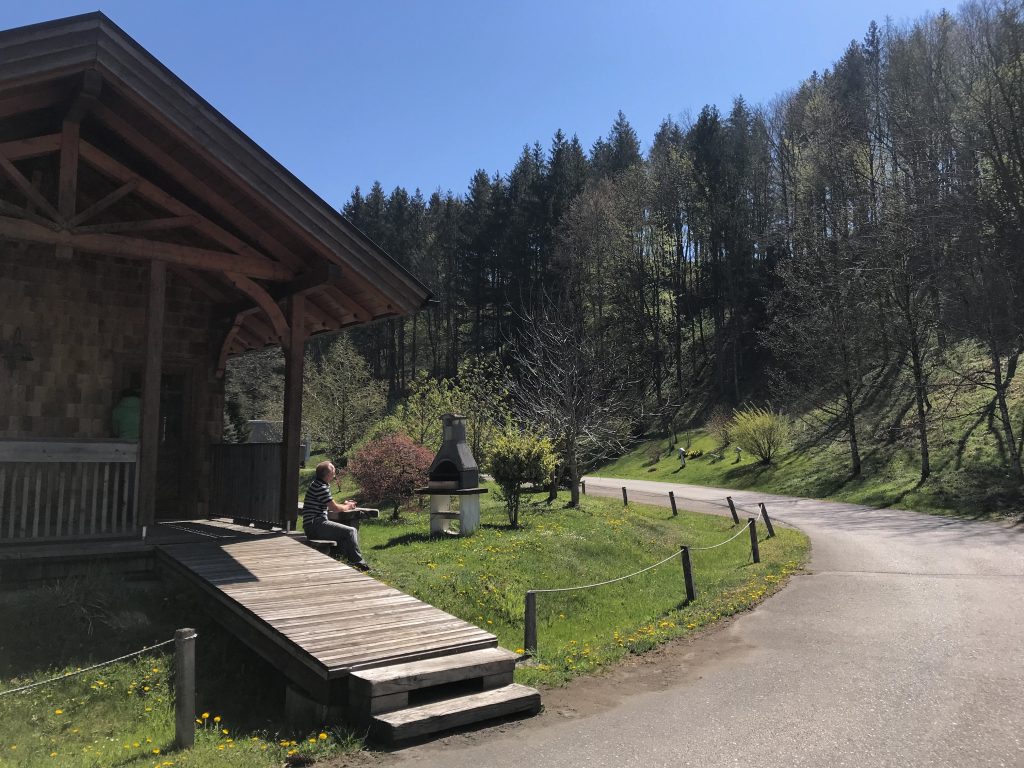
As a result of our involvement with the Living Product Challenge, our business at mafi has picked up (even in an economic downturn), interest in our products is increasing and we have enjoyed an immense amount of support and encouragement from within ILFI and beyond. We have found inefficiencies and we see those as important new challenges to overcome. Manufacturing everywhere needs to change for the benefit of our personal health and the health of the environment.
This moment in history is being defined by truths, transparencies, and accountability and manufacturers need to take leadership roles in these matters. Clients, whether they are architectural or engineering firms, building contractors, or private citizens, should not have to search for truth and transparency regarding important matters such as product ingredients, toxins, and health risk factors, complete life-cycle information, and meaningful certifications. Product manufacturers must provide full disclosure for their clients. Forward-thinking firms also want to be recognized for doing something positive about climate change, social change, and environmental resiliency. The people at mafi invite other individuals and manufacturers to search for ways that they can be advocates and actors for positive changes for the collective good. If you want to make a difference, one option is to consider joining the International Living Future Institute’s Living Product (LP50) group of manufacturers who, in conversation with the architecture and design community, are seeking to ensure that products that support human and environmental health become the norm, not the exception in buildings (living-future.org/LP50).
III. Our interest is in the future
The circular processes used in our methods are something we want to show to all wood product manufacturers; we want to demonstrate that these processes are ethically and environmentally correct, sustainable, and profitable. Carbon dioxide has been recognized as the culprit for global climate change and it is the one thing we can control. Simply put, sequester more carbon and the world can begin to heal.
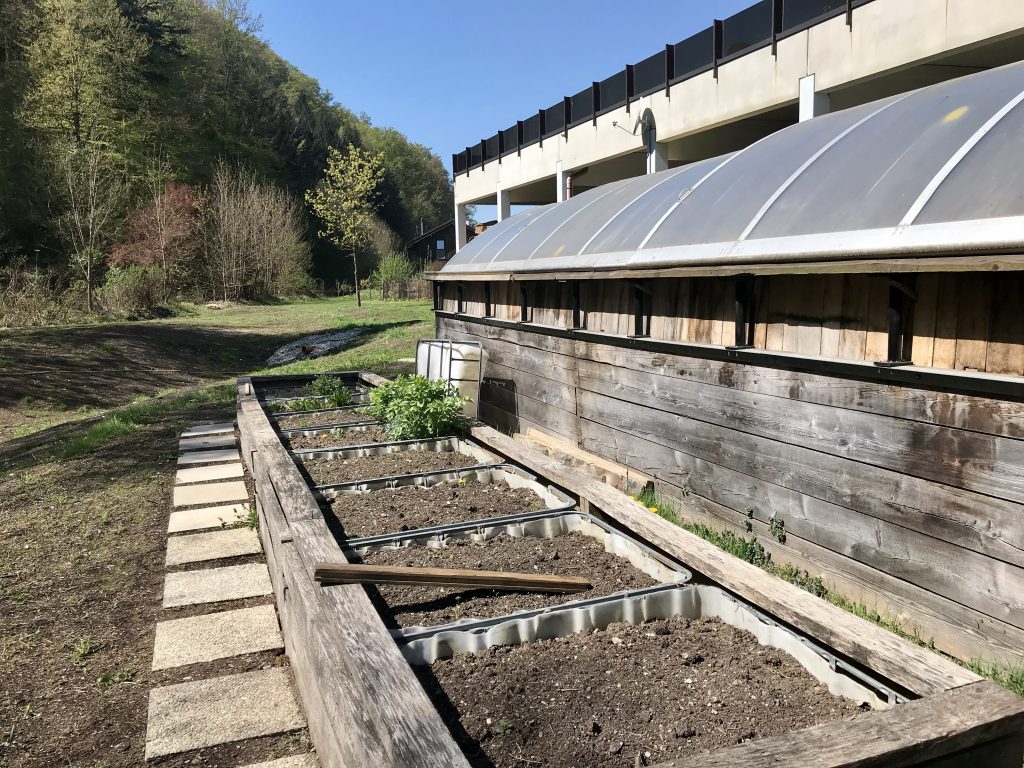
In efforts to help reduce carbon outputs by industries, governments have been talking about how carbon will be taxed. This taxation could cut into the profits of smaller production companies and we need to act now to show both industry and government that there is a better way forward to significantly reduce carbon dioxide levels. Some wood manufacturers and builders, including mafi clients, are currently using embodied carbon calculations for building specifications to reduce overall carbon usage for the life of a building. Wood producers need to actively promote more use of wood in these new carbon-sensitive construction projects, not just as a carbon storage device but also as a healthy alternative to artificial materials that require more carbon that is not sequestered. Wood product manufacturers should not be choosing any option that adds an artificial layer of unnecessary carbon-expensive “protection.”
Frankly, the well-being of our future generations depends on a real-world solution now. Innovative wood producers are the keystones to a new carbon future. Because wood is used on almost every project in every continent it can be an example of an important carbon sink. We need to skip the hazardous use of fossil fuel-based protection layers. This is the time to look seriously at product engineering throughout the wood products industries to determine how to follow in mafi’s footsteps and produce healthy, natural, and stable wood surfaces in every application without the addition or use of other chemical-based hazards. After all, wood is not only a sustainable solution but also natural and regenerative.
Standing on the banks of the Schwemmbach watching the trout rise on a summer’s evening, you can glance over the river to look through the windowed walls of our factory and see the faces of a few of the 80-plus people who are giving you their best work by building a Living Product. The foresters just up the hill are depending on buyers from cities all over the world. They need you to buy a mafi wood product for Living Buildings to sequester the carbon of the last 80 years for the next generation. This is not just a job for them; this is life lived to the fullest potential with the history of 101 years of stewardship on a river in Upper Austria.
